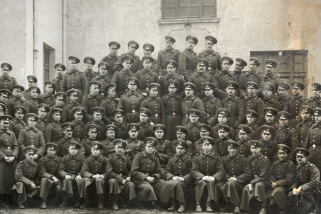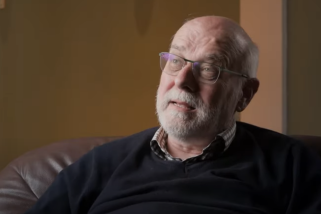Deadline: 19 March 2018
XI International Peter the Great Congress
«PETER I AND THE EAST»
St Petersburg, 1-2 June 2018
Every year St. Petersburg hosts International Peter the Great Congresses dedicated to the study of the Petrine epoch, preservation and promotion of its legacy and the development of cultural tourism.
The Congresses are held under the auspices of the Ministry of Culture of the Russian Federation and the Committee of Culture of St Petersburg, and are organized by the State Hermitage Museum, the Peterhof State National Park Museum, the St Petersburg Institute of History of the Russian Academy of Sciences, the Institute of Cultural Programmes, the Peter the Great Institute, and the Dmitry Likhachev Foundation.
The year 2018 having been declared the Year of Japan in Russia and the Year of Russian-Indian Tourism, it was decided to dedicate the Eleventh Peter the Great Congress to the vast topic of Peter the Great and the East.
In Peter’s time, numerous trade caravans and diplomatic missions traveled back and forth from Russia to the East – countries of Middle Asia, Persia, India and China. Peter the Great was the first to send out expeditions to study “the Russian East” – the Caspian Sea area, the Caucasus, Siberia, and Kamchatka. As the result of these expeditions the first collections of natural and man-made objects from Siberia and Eastern countries now held in the Hermitage, the Chamber of Curiosities and the Moscow Kremlin Museums were started in Russia.
* * *
Since the 17th century Astrakhan had been the centre of Russian commercial and political connections with Persia, India, countries of Middle Asia and through them with China. In Peter’s times Astrakhan’s role as “the Gate to the East” grew. The city had big colonies of Armenian, Persian, and Indian merchants, and the relations with the nomadic Kalmyk tribes wandering in the territories around Astrakhan were settled during Peter’s reign as well.
One of Peter’s great initiatives was the scientific study of Russia’s geography. In 1698 soon after his return from the Grand Embassy Peter ordered to start mapping the Caspian Sea which was a real “mare incognitum” at those times. The work had been completed by 1721 and Peter sent a copy of the Map to the Royal Academy of Sciences in Paris.
The idea of dispatching the first expeditions to explore natural resources of Siberia and Kamchatka and to map those territories also belonged to Peter the Great. He was extremely curious whether “Asia and America come together”. To answer these questions several expeditions organized (or planned) by Peter were sent out: one was headed by a German physician D.G. Messerschmidt (1719-1727), then came the first Kamchatka expedition of V. Bering (1725-1730), and in 1733-1743 the second Kamchatka or as it was then called the Great Northern Expedition in which V. Bering, G. F. Müller, J.G. Gmelin, G. W. Steller, J. E. Fischer and Louis De l’Isle de la Croyère took part. As a result of these expeditions new territories were discovered and rich collections of natural objects created.
In 1717-1720 a physician Gottlieb Schober traveled to the Lower Volga region and to the Northern Caucasus where he discovered the first hot mineral springs. In 1721 a botanist J. C. Buxbaum started collecting plants, animals and fossils of South-Eastern Europe, Asia Minor and the Caucasus.
Having started before Peter’s time the exchange of diplomatic envoys between Russia and Central Asian khanates continued actively during his reign. Caravans from Astrakhan traveled from the estuary of the Yaik (present Ural) River towards the Aral Sea and further on to Turkistan and Tashkent then turning West to Bukhara. Peter’s interest in Middle Asia expressed in two expeditions of A. Bekovich-Cherkassky (1715-1717).
Russian diplomatic relations with China started in the 16th c. and continued to develop actively in the Petrine epoch. Embassies headed by F. Golovin (1686-1690), E. I. Ides and A. Brand (1692-1695) and others often combined diplomatic and commercial missions. An important role in establishing Russian-Chinese contacts was played by members of the Jesuit mission in Peking. A French Jesuit J. F. Gerbillon and his companion from Spain T. Pereyra participated in concluding The Treaty of Nerchinsk (1689) and subsequently described this event: the two had academic contacts with the Academy of Sciences in St. Petersburg.
Peter the Great was extremely interested in finding travelling routes to India and his Persian campaign (1722-1723) was in effect an attempt to gain them.
European countries continuously tried to establish diplomatic relations with Persia, India and China and competed with each other in building transit trade routes through Russian territory. During Peter’s reign such famous foreigners as J. B. Tavernier, Jesuits F. Avril and L. Barnabe, and others traveled to the East through Russia.
Peter’s activity in the East resulted in rich collections of natural and man-made objects and left numerous monuments and memorable places in Caspian area, Siberia and the Far East.
* * *
The following topics are proposed for discussion at the Congress:
Russian diplomatic and trade contacts with Persia, India, Middle Asia and China during the Petrine epoch.
Expeditions to explore natural resources and map “Eastern territories” of the Russian Empire.
European travelers and explorers in Petrine expeditions to the East.
Astrakhan as “a Gate to the East”. The role of Astrakhan governors in Russian foreign policy in Caspian region. The ship “Oryol” in Astrakhan; Russian fleet building and the security of Eastern trade.
Peter’s Persian campaign and its consequences. The Russian Empire and Peter’s Eastern imperial plans.
Armenian and Georgian colonies in Moscow and St. Petersburg during Peter’s times, Russian military aid to these countries.
Russian-Japanese contacts during the Petrine epoch (the Japanese in Russia, a Japanese language school in St. Petersburg, etc.).
Eastern trade in Peter’s time, transit of oriental goods to Europe through Russian territory (silk, china, tea, etc.).
Oriental motifs in art and architecture in Peter’s time.
Petrine collections of natural items, objects of art and archeology from Siberia and Eastern countries in Russian museums (“The Siberian collection” in the Hermitage, Oriental rarities in Kunstkamera, etc).
Monuments and memorable places of Petrine times in Caspian area, Siberia and the Far East.
* * *
The working languages of the Congress are Russian and English.
In order to take part in the Congress as a speaker, please, submit your application. Deadline is 19 March 2018. The application should provide the following details: full name, place of employment and position, academic degree, contact details (e-mail, home and mobile telephone numbers), the title and short synopsis of the proposed paper (1000-1500 characters).
The Organizing Committee reserves the right to select the papers to be delivered at the Congress.
The organizers of the Congress will provide accommodation and subsistence in St Petersburg from 31 May to 3 June 2018 for the out-of-town and foreign participants.
The Organizing Committee:
Tel. +7 812 272 91 43; +7 812 272 29 12
petr@Lfond.spb.ru













